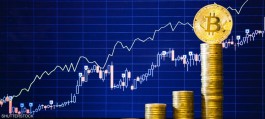After the yellow metal saw notable gains this year, gold investors are anticipating a record rise in prices next year, as declines in US interest rates, continued geopolitical risks, and central bank purchases are expected to support the market after a volatile 2023.
The year-on-year spot gold price rose by about 13% in 2023, its best year since 2020, ending the year at about $2,063 per ounce.
Ole Hansen of Saxo Bank said: After a surprisingly strong performance in 2023, we will see further gains in gold prices in 2024, driven by a trifecta of momentum chasing hedge funds, central banks continuing to buy gold at a steady pace, along with renewed demand from fund investors. Traded investment.
On December 4, gold hit a record high of $2,135.40 amid bets on US monetary policy easing in early 2024 after a dovish tilt from Federal Reserve Chairman Jerome Powell, surpassing the previous record set in 2020.
The precious metal almost reached uncharted territory in May this year as the banking crisis in the United States worsened. By October, they had fallen to nearly $1,800 an ounce before safe-haven demand triggered by tensions in the Middle East led to another surge.
Meanwhile, investors returned to the popular SPDR Gold Shares exchange-traded fund, which recorded net inflows of more than $1 billion in November.
A Reuters poll in October predicted prices would average $1,986.50 in 2024. They have averaged more than $1,950 so far this year, higher than any previous annual average.
JPMorgan (NYSE:JPM) expects a surprise rally in gold in mid-2024, with a target peak of $2,300 due to expected interest rate cuts. While UBS expects a record $2,150 by the end of 2024 if interest cuts are achieved.
On the other hand, the World Gold Council, in its 2024 forecast, reported that a decline of about 40 to 50 basis points in long-maturity bond yields, after a 75 to 100 basis point cut in interest rates, could translate into a 4% gain for gold.
Inflation risk
Analysts also expect that growing tensions in the Middle East, election-induced uncertainty in major economies, and China-led central bank purchases will also boost bullion's safe-haven appeal in the coming year.
But gold may have to undo some of this year's gains if rising inflation forces the Fed to abandon plans for a monetary policy shift in 2024, said Han Tan, chief market analyst at Xenity.
Inflation slowing faster than interest rate cuts by the Federal Reserve could slow the economy and dampen purchases.
Heraeus Metals expects demand for gold jewelry to rise in China, the largest consumer, this year, with the possibility of receiving further support in 2024 from stimulus measures.
Gold at settlement on Friday
Gold futures prices turned lower when settling trading, on Friday, but achieved gains for the third week in a row, in light of increasing expectations that the Federal Reserve will reduce interest rates during 2024.
Upon settlement, gold futures prices for February delivery fell by 0.55%, or $11.7, at $2,071.8 per ounce, ending this year up about 13%.
This comes as markets await more data to build expectations about future Federal Reserve policy, as the minutes of the latest policy meeting and the monthly jobs report in the United States are released this week.
other metals
By contrast, silver is down about 1% in 2023, trading just under $24 an ounce. But they will be heading towards $26 an ounce next year, benefiting from improved industrial demand, according to TD Securities.
As for the price of platinum, it ended the year down by more than 7% in 2023, and its price is expected to range between $800 and $1,100 per ounce in 2024, according to Heraeus estimates.
The impact of the energy transition has been felt on palladium, as it has fallen by more than a third this year, its worst performance since 2008.
Palladium, which fell below $1,000 an ounce in November - for the first time in five years - before recovering, is facing surpluses as electric cars grow in popularity.
Bank of America (NYSE:BAC) expects palladium to average $750 an ounce in 2024 taking into account any significant supply cuts.




































